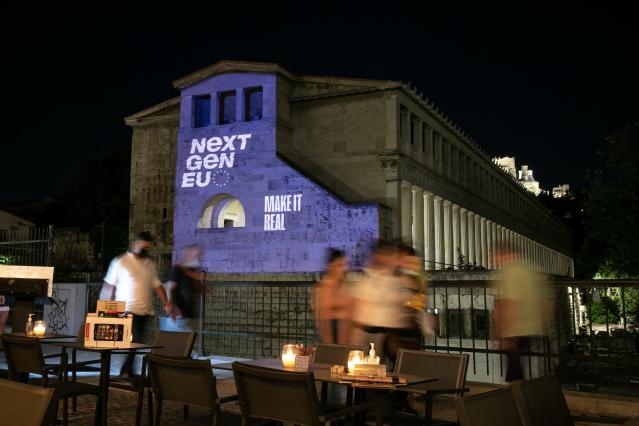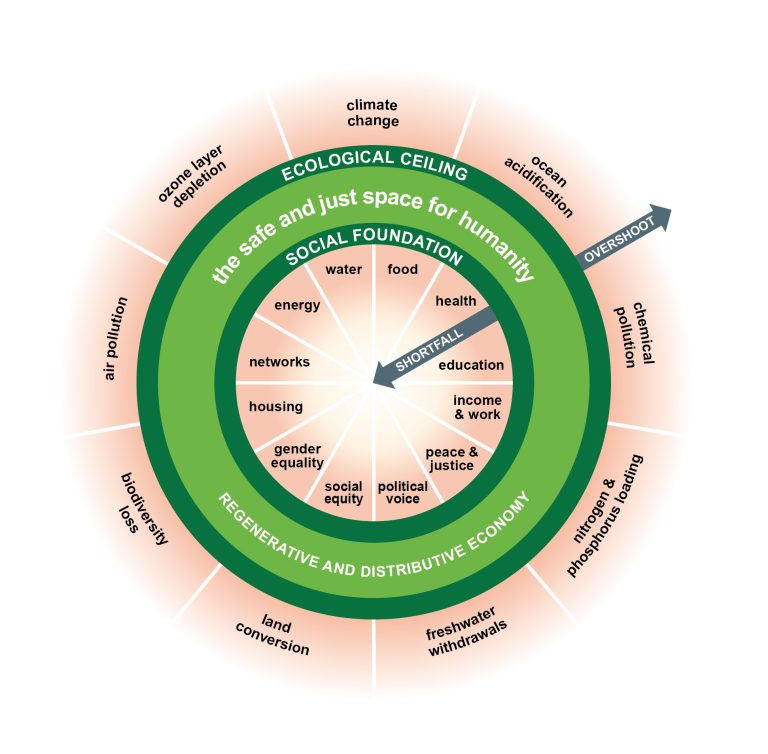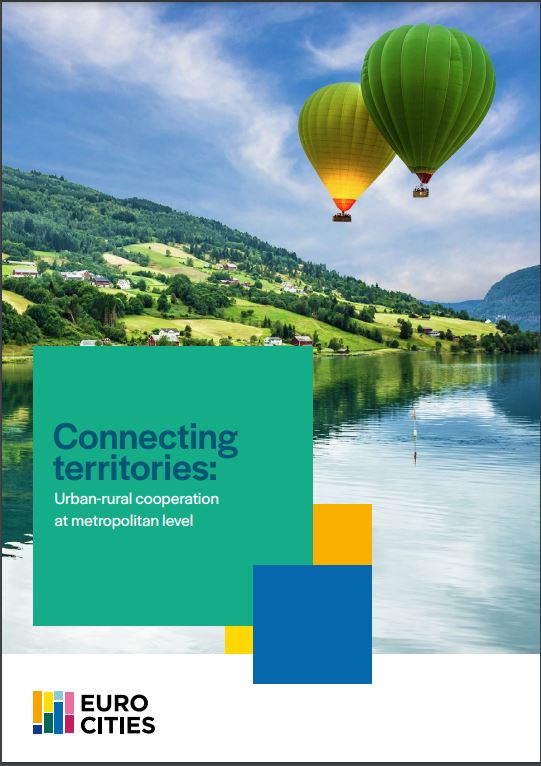Reading Time: 10 minutes
Governance – Cities building partnerships
As highlighted in the Eurocities Pulse survey, in 2022 many cities have been busy developing city governance structures that promote partnerships and that are better able to adopt a mission-driven and a whole-of-society approach to governance. Looking to 2023, improving city governance is again an important ambition for many city leaders.
As highlighted in the Eurocities Pulse survey, in 2022 many cities have been busy developing city governance structures that promote partnerships and that are better able to adopt a mission-driven and a whole-of-society approach to governance. Looking to 2023, improving city governance is again an important ambition for many city leaders.
Partnering up for EU recovery – how are cities considered and supported?
At the height of the pandemic, EU leaders agreed on an unprecedented joint recovery instrument mobilising around €750 billion of firepower. This historic moment proved that EU national governments are willing to partner up to build a common investment strategy.
As highlighted in the Eurocities Pulse, economic recovery remains a top priority for one in five mayors. And for good reason: the EU recovery plan is set to have implications beyond economic recovery, and holds the potential to shape Europe’s development model for the years to come. In the best-case scenario, it will accelerate Europe’s just, green and digital transformation, reduce regional inequalities, and put Europe on the path to climate neutrality.
As cities, we are fully aware that the decisions we make today will have implications for the investment priorities for many years to come.
– Dario Nardella, Mayor of Florence, President of Eurocities
Against this background, it is not surprising that European cities sought a crucial role in both the design and implementation of this transformational plan. Early in the process, Eurocities promoted the recognition of cities in the plan as part of an effective multi-level coordination on recovery. Eurocities advocated for rules that would make the involvement of cities in the design and implementation of the plans a requirement for national governments. As a result, the consultation of local authorities, including cities, was added as a non-binding requirement for the approval of national plans.
Unfortunately, this soft approach did not result in widespread consultation and coordination between levels of government, as indicated by data from Eurocities research carried out in 2020 and 2021. Despite considerable efforts to bring urban projects, ideas, and strategies to the attention of national governments and ministries, most cities found their involvement and recognition to be insufficient. Among the 50 cities surveyed, 63% considered their involvement in the design phase insufficient (only 5% considered it good). Only 12% were confident that the specific contribution of their city was being considered. These results were confirmed and further investigated in joint research conducted by Eurocities and the CIDOB think tank via the Urban Recovery Watch.
This is a great missed opportunity. In the design phase, mayors made concrete proposals, both at the strategic level and with ideas ready to be developed, often drawing on their local recovery strategies. They brought forward specific projects on mobility, building renovation, digital innovation, as well as social cohesion that could have a systemic impact and that are strongly aligned with the digital and green priorities of the EU Recovery Plan.
For example, Eurocities highlighted cases such as Budapest, which was frozen out of national level discussions.

A priority for urban investment
For cities, the EU recovery plan should have taken lessons from the well-established model of the EU’s Cohesion Funds, for which there is a clear partnership principle, and for which an earmarking of resources helps to make €20 billion from the current EU budget directly accessible to cities.
Apart from working together to assess the implementation of urban recovery, in 2023 cities will be busy implementing EU recovery investments. For mayors responding to the Eurocities Pulse, this was highlighted as a top priority. For some of them, this will be extremely challenging given the short time frame for investments and they will have to work hand in hand with regions and national government to implement projects on the ground.
I feel the pressure. We’re really trying to put in place a system to monitor the funds that we’ll receive, to ensure that everything will be done correctly, according to the rules, and without delays. I’m not concerned. It’s just that the system requires a lot of resources.
– Anna Lisa Boni, Deputy Mayor, Bologna
City administrations paving the way to participatory democracy
Cities have long-standing experience in the fields of citizen engagement and citizen participation. In the context of EU efforts to bring people closer to Europe, cities are playing their part. Be it to engage local people ahead of EU elections or to localise EU efforts such as the Conference on the Future of Europe, which was the first large-scale EU-level citizen engagement project, in which cities and their leaders played an important role by hosting citizen panels and bringing the results to the EU level.
Cities are the level of governance closest to people, and they are a repository of operational, organisational and strategic knowledge on citizen participation. Eurocities member cities have a tradition of working together in the network to exchange best practices and learn from each other on participatory governance. In this context, in 2021 Eurocities carried out research to review participatory practices among 173 cities and understand the role city administrations play to build partnerships with local people. The evidence is clear:
- Almost all cities have established some form of participatory practice
- More than one out of two cities have established advanced practices that go beyond consultation and offer co-design activities to their residents
- Almost one out of four cities are taking participatory democracy to the next level and already offers mechanisms for locals to co-decide with the city government on local matters
Political will is usually driving this ambition on participatory practices. It is therefore no surprise that for one out of six mayors responding to the Eurocities pulse ‘services for citizens and citizen participation’ is a top priority in 2023. Mayors particularly highlight their ambition to reinforce bonds with and between local people following the pandemic lockdowns, as well as the need to develop new forms of participatory democracy linked to the environmental transition.
For cities, citizen participation is not a goal in itself. It is an essential tool that allows us to truly govern and react to the critical challenges ahead.
– Dario Nardella, Mayor of Florence, President of Eurocities
The Urban Agenda for the EU – consolidating a unique multi-level mechanism for engaging cities
Cities have been trying to develop a stronger and more structured relationship with the EU for a long time. The premise has always been simple: let’s work together, across levels of government, because together we can get more done. Evidence from the Eurocities Pulse on mayors’ perception couldn’t be clearer: more than 80% feel that they are contributing to EU policy priorities and processes, which rises to 92% when restricted to EU mayors only. If the EU recovery plan and cohesion funds were crucial to establish strong multi-level governance on EU funding, the Urban Agenda for the EU was the other side of the coin, crucial for establishing strong multi-level governance on EU decision making.
Although there is a big overlap between the way policies designed at local and international level support and impact one another, the EU’s competencies in urban matters have remained limited, while the work through the Urban Agenda and other soft competencies has grown stronger.
The Urban Agenda for the EU brings together representatives from all levels of governance in a series of partnerships focused on policies that impact urban affairs. As such, it has been instrumental in bringing forward the idea of giving cities a seat at the table when decisions are taken. Despite some of these and other achievements, many cities feel that the EU is still falling short of meeting their needs.
According to data from the Eurocities Pulse Mayors Survey, almost 50% of mayors feel that the EU institutions and policies tend not to take into account their specific needs and the potential that cities offer. Similarly, almost half of the mayors surveyed suggest that they have encountered situations where current EU rules and policies prevent them from achieving their goals. In this context, building stronger multi-level dialogue, including through the Urban Agenda, is more important than ever for mayors.
While most of the previous 14 partnerships are now concluded, four new partnerships were created in 2022 and 2023, on greening cities, sustainable tourism, food and equalities in the city.
While getting all levels of government to commit to the process and build on the results of these partnerships was not always easy, some results were achieved. For example, the partnership on migration and integration has provided a stable collaboration mechanism under the joint leadership of the European Commission (DG Home) and the city of Amsterdam, with a work programme that is directly linked to delivering the EU’s longer-term strategy in the area, while at the same time supporting cities tackling local challenges. The partnership on housing, jointly led by the city of Vienna and Slovakia, successfully pushed the critical issue of affordable housing in urban areas high up the political agenda at EU level through informal ministerial meetings on housing. Other partnerships, such as on circular economy led by the city of Oslo, have produced a series of high-quality tool kits and guidance documents, which other cities have put into good use.

Doughnut economic model
Despite success like this, many cities feel that the EU is still falling short of meeting their needs. Almost 50% of mayors responding to the Eurocities Pulse feel that the EU institutions and policies tend not to consider their specific needs and the potential that cities offer. Similarly, almost half of the mayors surveyed suggest that they have encountered situations where current EU rules and policies prevent them from achieving their goals. In this context, building stronger multi-level dialogue, including through the urban agenda, is more important than ever for mayors.
As cities raise their voice ahead of the next European elections on how the EU should improve the way it works with cities, it is clear that the Urban Agenda will represent an important example of how to turn ambition into practice.
My wish is for EU governance to be rewired to enable a much stronger and joined up collaboration between the EU and our cities. The urban agenda for the EU has laid the ground for this.
– Dario Nardella, Mayor of Florence, President of Eurocities
Urban-rural cooperation at metropolitan level – building partnerships beyond city borders
According to the European Commission’s own calculations, around 50% of the rural population of the EU lives close to a city – and often as part of wider metropolitan areas. With that in mind, in 2022 Eurocities authored a paper highlighting how it is absolutely necessary to better recognise this level of governance as an essential cog in the management of complex urban-rural relationships. Examples include interventions in local food chains, delivering essential services, and the cohesive management of transport networks.
To better understand how such partnerships can work in practice, cities have joined forces to exchange different practices, which resulted in a publication that gathers case studies with examples of ongoing projects from metropolitan areas from all over Europe. The publication, available here, shares concrete examples of how metropolitan areas are pioneering new forms of urban-rural cooperation in new and established sectors such as mobility, food, energy, and health. The case of Brno is particularly emblematic: the city has developed a strategic partnership with over 80 surrounding municipalities encompassing all sectors to promote urban-rural cooperation at metropolitan level. For its implementation, the strategy could count on €200 million worth of Cohesion investments in the past seven years. A new strategy recently implemented will count on over €300 million.

